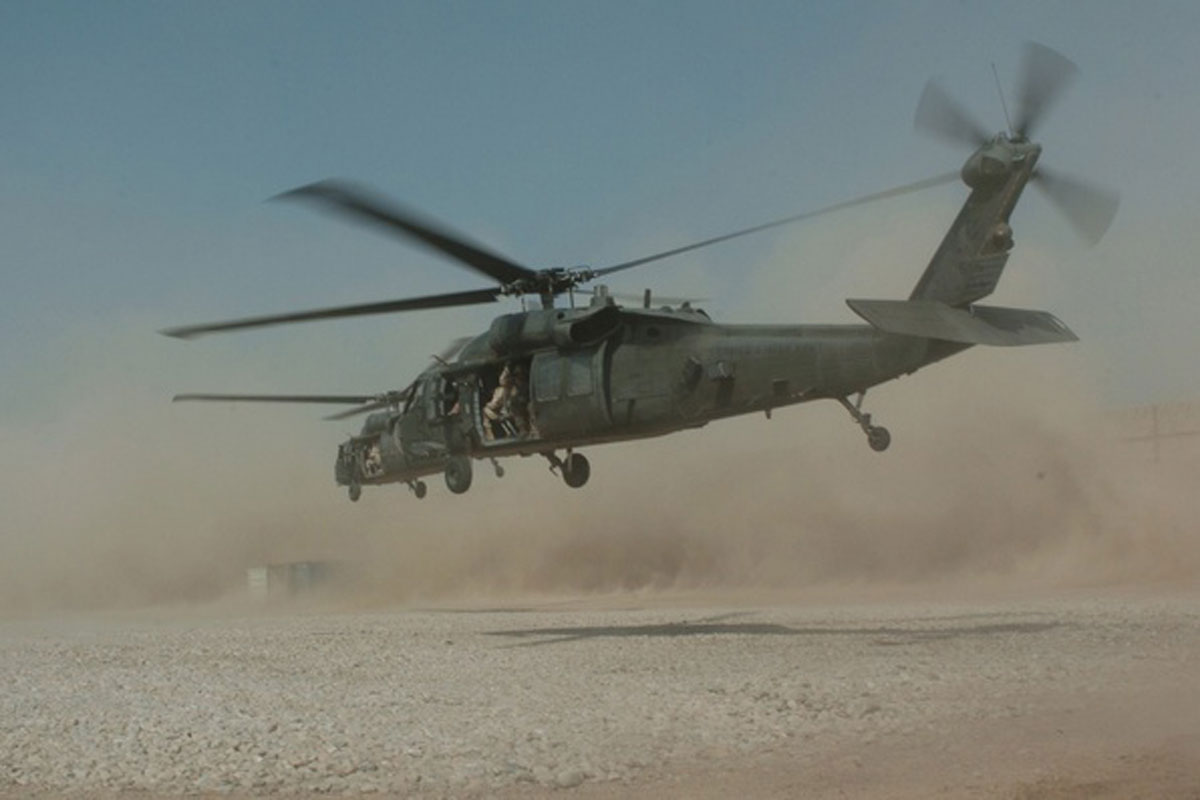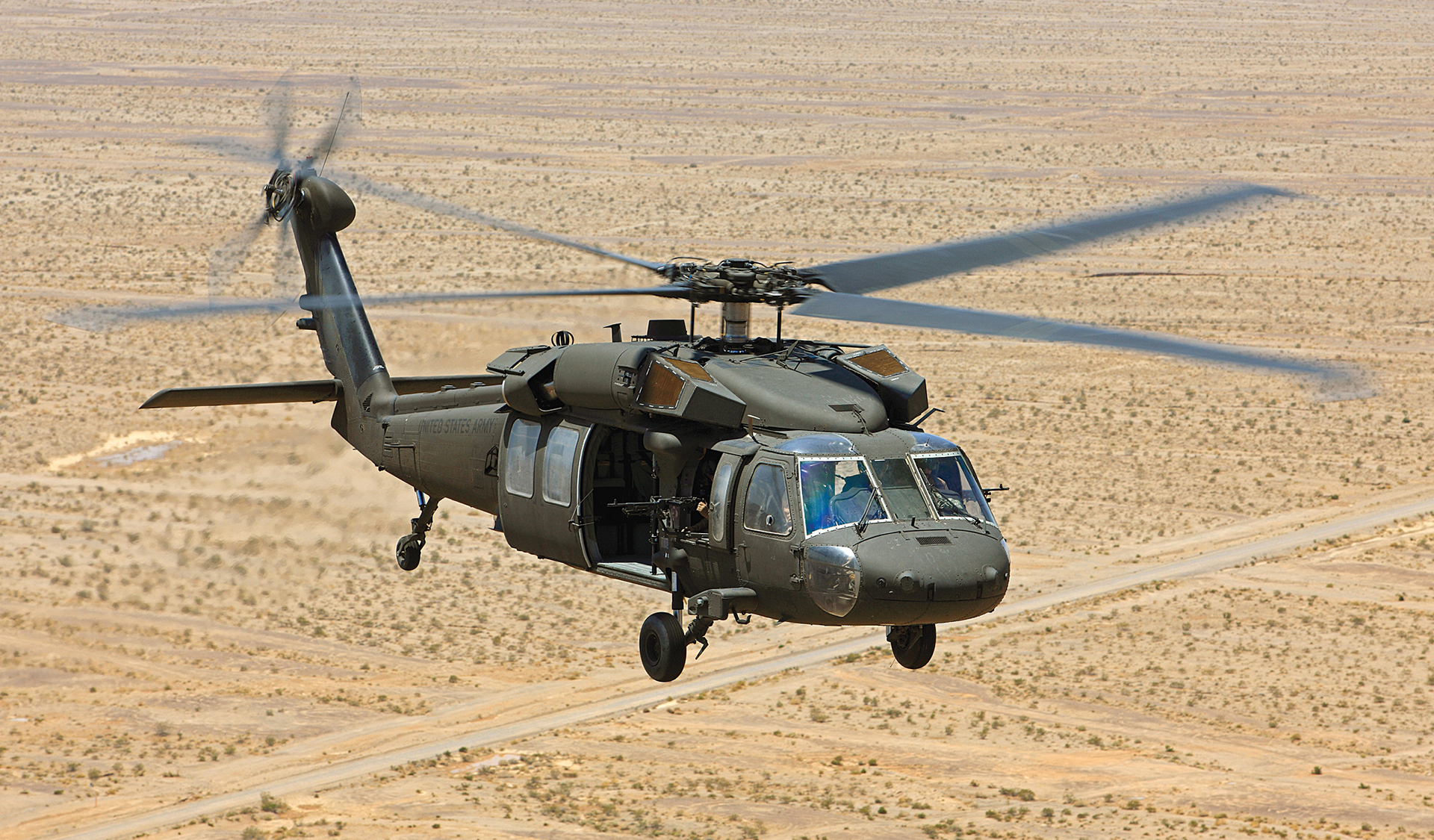Flying High: UH 60 Helicopter Safety Protocols You Need To Know
Flying High: UH 60 Helicopter Safety Protocols You Need To Know
Blog Article
Recognizing the Mechanics and Design Behind Uh 60 Helicopters
The UH-60 helicopter, commonly recognized as the Black Hawk, stands as a peak of modern rotorcraft modern technology, embodying a blend of durable design and elaborate auto mechanics. As we peel back the layers of the UH-60's style, a world of intricate systems and thorough design comes to light.
Background of UH-60 Helicopters
The history of UH-60 helicopters traces back to the late 1970s when the USA Military sought a versatile and advanced energy helicopter to replace its aging fleet. In reaction to this requirement, the Sikorsky Aircraft Corporation created the UH-60 Black Hawk helicopter. Introduced in 1979, the UH-60 rapidly ended up being a staple in army operations because of its outstanding capabilities.
The UH-60 was developed to succeed in a variety of objectives, consisting of army transport, medical emptying, digital war, and special procedures. Its ability to adjust to various functions made it a beneficial property to the U.S. uh 60. Army and other army pressures worldwide
Throughout the years, the UH-60 system has actually undertaken a number of upgrades and variations to boost its performance and maintain rate with advancing goal requirements. These helicopters have actually seen comprehensive service in problems such as the Gulf Battle, Afghanistan, and Iraq, showcasing their dependability and flexibility in diverse operational settings. The UH-60's abundant background is a testimony to its long-lasting tradition as a top utility helicopter.

Engine and Power Systems
Using innovative propulsion innovation, UH-60 helicopters are outfitted with sophisticated engine and power systems to ensure optimum efficiency and integrity in a range of functional circumstances. The UH-60, commonly called the Black Hawk, is powered by two General Electric T700-GE-701D engines, each efficient in providing up to 1,940 shaft horsepower. These turboshaft engines provide the necessary thrust for the helicopter to lug out its missions efficiently, including troop transport, clinical discharge, and fight support.

Rotor System and The Rules Of Aerodynamics
Just how do the blades system and aerodynamics of UH-60 helicopters add to their functional performance and trip abilities? The blades system of the UH-60 helicopter plays a crucial function in supplying lift and propulsion.
Aerodynamics likewise play a crucial function in the performance of UH-60 helicopters. The structured body and blades blade layout minimize drag, permitting the helicopter to achieve greater rates and far better fuel effectiveness. The aerodynamic layout of the UH-60 also adds to its capacity to operate in varied ecological problems, including hot temperature levels Get the facts and high elevations.
Avionics and Trip Control Systems

In its detailed control with the rotor system and the rules of aerodynamics of UH-60 helicopters, the avionics and trip control systems form an important network of innovations shaping the aircraft's operational useful site abilities. Avionics incorporate the digital systems made use of for communication, navigation, and keeping track of numerous aircraft functions. In the UH-60, these systems include digital screens, interaction radios, general practitioner navigating, weather condition radar, and auto-pilot systems. These avionics systems provide crucial information to the pilots, enhancing situational recognition and guaranteeing secure and effective procedure of the helicopter.
The trip control systems of the UH-60 are accountable for equating the pilot's inputs right into the proper changes to the rotor system, guaranteeing secure trip and ability to move. These systems contain hydraulic actuators, servos, and computers that interact to manage the major and tail blades, along with other flight control surface areas. By precisely handling the helicopter's trip characteristics, these systems allow pilots to do a variety of goals, from transport and search-and-rescue to deal with procedures, with accuracy and self-confidence.
Function and Applications in Aeronautics
The function and applications of avionics and flight control systems in aviation are integral to making certain the safe and reliable operation of airplane, including UH-60 helicopters. Avionics systems in UH-60 helicopters incorporate a series of electronic systems that help in navigating, communication, surveillance, and controlling different airplane functions. These systems consist of electronic display screens, autopilot systems, communication radios, general practitioner navigation tools, and weather condition radar. Flight control systems play an essential role in maneuvering the helicopter airborne, maintaining security, and making certain exact movements. The fly-by-wire innovation made use of in modern UH-60 helicopters converts pilot inputs right into electronic signals, which are then analyzed by the flight control computers to change the airplane's control surface areas. Additionally, these systems incorporate safety attributes such as auto-pilot modes, terrain recognition warning systems, and security enhancement a knockout post systems to boost the overall safety and functional capabilities of the UH-60 helicopters in various goals, including army transportation, clinical discharge, search and rescue, and airborne firefighting.
Final Thought
In conclusion, the UH-60 helicopter is a flexible airplane with a rich history and progressed design. Its engine and power systems, blades system, aerodynamics, avionics, and flight control systems all work with each other to make it a reliable and efficient maker.
In its complex coordination with the rotor system and the rules of aerodynamics of UH-60 helicopters, the avionics and flight control systems form a critical network of modern technologies shaping the aircraft's operational capacities.The flight control systems of the UH-60 are accountable for equating the pilot's inputs into the ideal modifications to the blades system, making sure stable flight and maneuverability. Avionics systems in UH-60 helicopters incorporate a range of electronic systems that help in navigating, communication, tracking, and regulating numerous aircraft features. In addition, these systems integrate security attributes such as auto-pilot modes, surface recognition advising systems, and stability enhancement systems to boost the general safety and operational capacities of the UH-60 helicopters in different missions, including troop transportation, medical evacuation, search and rescue, and airborne firefighting.
Its engine and power systems, rotor system, the rules of aerodynamics, avionics, and flight control systems all function with each other to make it a reliable and efficient machine.
Report this page